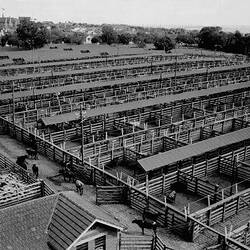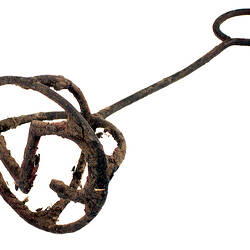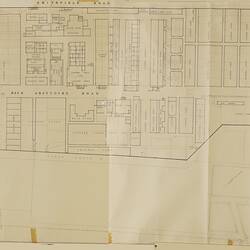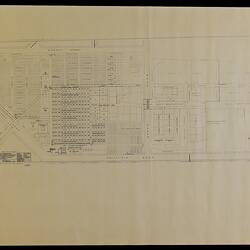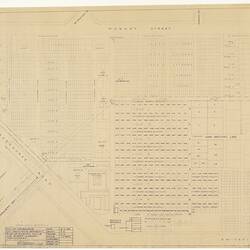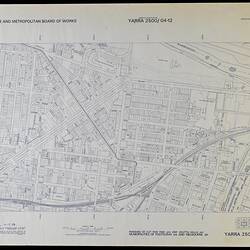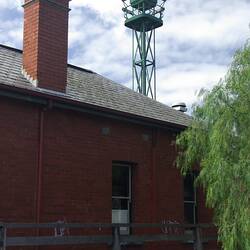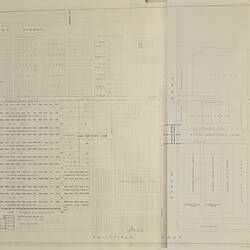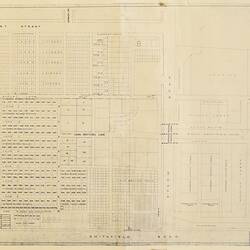Between 1851 and 1861, Victoria grew from a new colony of 97,000 people to the largest and most prosperous colony in Australia with almost 540,000 people - approximately 46 per cent of the Australian population. Over the following decades, Victoria evolved from a sheep grazing economy based around squatters, to one of great pastoral wealth as the gold rush and mercantile enterprises that followed advanced and expanded Victorian prosperity and economic activity.
As the city of Melbourne grew so the markets flourished, and demand escalated for a regulated livestock market. According to the minute book of the Markets' Commission, Melbourne's first municipal livestock marketplace was initially opened on February 9, 1842 at an indeterminate "site on Sydney Road". It is likely that this is the current site of the Queen Victoria Market on the corner of Elizabeth Street north and Victoria Street. As demand became even greater, Melbourne residents put forward a proposal to the Market Committee on April 10, 1849, to erect a market and public abattoirs in an appropriate, central location. The Trustees of Flemington Racecourse agreed to provide land on the Maribyrnong River for the siting of abattoirs and cattle yards.
On August 30, 1856, a Crown grant was made to Melbourne City Council for a 24 acre site to be developed for the Newmarket Saleyards in the Doutta Galla Province of Melbourne. The site was a trapezium shaped block of land, bounded by Racecourse Road, Smithfield Road, Epsom Road and Market Street, with abattoirs adjoining the saleyards to the south-west. The most south-westerly boundary of the abattoirs adjoined the Maribyrnong River for the discharge of liquid waste. Historically, the Newmarket Saleyards at times spilled over its northern boundary, Racecourse Road, and its southern boundary, Epsom Road but was constrained by its western and eastern edges.
In late 1857 tenders were invited for the erection of the cattle markets and by 1859 the Newmarket Saleyards were in operation, capable of accommodating 100 head of cattle and 500 head of sheep. In 1860 the Newmarket Railway station and siding opened, followed in 1861 by the official opening of the Newmarket Saleyards and City Abattoirs. The Abattoirs were located on 57 acres bounded by Smithfield, Epsom and Westbourne Roads and the Maribyrnong River. Upon opening, the abattoirs were authorised to operate 24 hours per day except Sundays, Good Friday and Christmas Day. Between 1898 and 1908 the abattoir buildings were replaced by more hygienic facilities. The Saleyards spread over 24 acres and over time incorporated 1196 sheep pens, 232 bullock pens, 300 calf pens, drafting races, holding yards, land outlets, transport loading and unloading ramps, and provisions for a scale weighing area. From 1874-5 the Saleyards Administration Buildings were erected and then added to between 1911 and 1919, to house a post office, police station, Council offices, Department of Agriculture offices, livestock agents and trade operators' offices, and Stock and Land publication offices.
References:
Australian Bureau of Statistics, 2008, Australian Historical Population Statistics (cat. no. 3105.0.65.001), viewed 26/07/10.
Footscray Institute of Technology (FIT) Humanities Dept. 1984, 'The industrial archaeology of the Newmarket saleyards and meatworks complex, Victoria : a report / compiled by engineering students in the course HU 151 (Work, Technology and the West) during ...1984', rev. Ed. Footscray Institute of Technology Humanities Dept., Footscray.
Peck, HH. 1974, 'Memoirs of a stockman', Stock and Land Publishing Co, Melbourne.
More Information
-
Keywords
Cultures and histories : Melbourne and Victoria, city & town life, Working Lives
-
Authors
-
Article types


